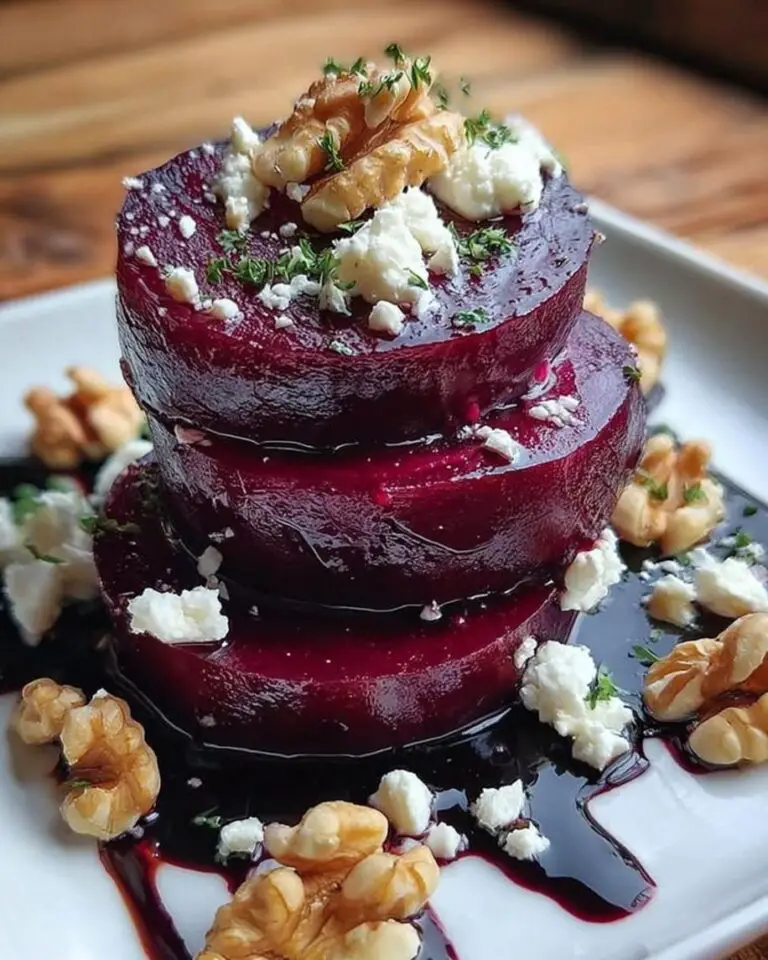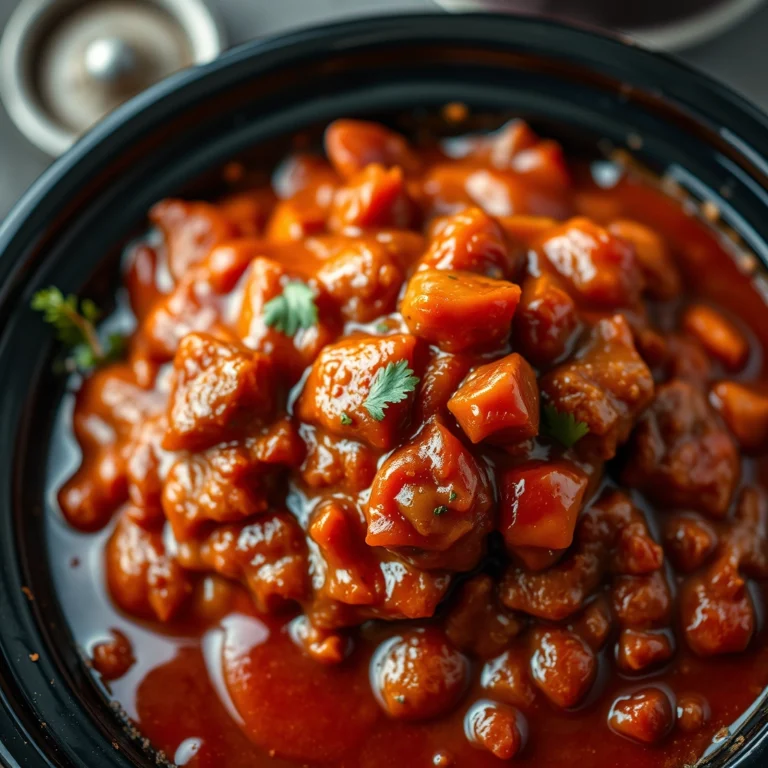Best Cozy Autumn Wild Rice Soup Recipe

Cozy Autumn Wild Rice Soup: A Hearty Bowl of Seasonal Comfort
Nothing warms the soul quite like a bowl of cozy autumn wild rice soup. This hearty dish combines earthy wild rice with seasonal vegetables and aromatic herbs to create a comforting meal perfect for crisp fall evenings. Meanwhile, the rich broth and tender ingredients make every spoonful satisfying.
As the leaves change color, this soup becomes a staple in many kitchens. The blend of textures from the chewy wild rice to the soft vegetables creates a delightful eating experience. Furthermore, the warm spices and savory flavors evoke memories of family gatherings and holiday meals.
Quick Recipe Highlights
- Flavor Profile: This cozy autumn wild rice soup balances savory mushrooms with sweet carrots and aromatic thyme. The combination creates a complex taste that evolves with each bite.
- Texture: Wild rice provides a satisfying chew while the vegetables soften into the creamy broth. The result is a comforting contrast that keeps you coming back for more.
- Aroma: Fresh herbs like rosemary and thyme release their fragrance as the soup simmers. These earthy scents mingle with the richness of sautéed onions and garlic.
- Visual Appeal: The dark wild rice grains stand out against the golden broth. Colorful vegetables and fresh herbs make the dish as beautiful as it is delicious.
- Skill Level Needed: Beginners can master this recipe with basic chopping and simmering techniques. The steps are straightforward but yield impressive results.
- Special Equipment: You only need a large pot and basic kitchen tools. A wooden spoon helps prevent sticking while stirring.
Recipe Overview
- Difficulty Level: This cozy autumn wild rice soup requires minimal advanced techniques. Most cooks can prepare it with standard kitchen skills and equipment.
- Category: Perfect as a main dish or starter, this soup fits multiple meal categories. It works well for weeknight dinners or special occasions.
- Cuisine: While wild rice originates from North America, the preparation draws from European soup traditions. The result is a fusion of rustic flavors.
- Cost: Affordable ingredients make this an economical choice. Wild rice costs more than white rice but stretches across multiple servings.
- Season: Cooler months highlight the soup’s warming qualities. However, you can enjoy it year-round with seasonal vegetable adjustments.
- Occasion: Serve this soup at casual family meals or elegant dinner parties. It adapts well to different settings and serving styles.
Why You’ll Love This Cozy Autumn Wild Rice Soup
First, the taste profile offers something for everyone. The earthy wild rice pairs beautifully with sweet root vegetables and savory mushrooms. Additionally, fresh herbs brighten the rich broth without overpowering the other ingredients.
Second, the preparation couldn’t be simpler. After chopping the vegetables, you mostly let the pot simmer. This makes the recipe ideal for busy weeknights when you want homemade comfort food without fuss.
Third, the nutritional benefits make this soup a smart choice. Wild rice provides protein and fiber while the vegetables deliver essential vitamins. Together, they create a balanced meal in one bowl.
Fourth, the recipe scales easily for crowds. Whether cooking for two or twenty, you can adjust quantities without compromising quality. The soup also keeps well for leftovers.
Finally, the cost per serving remains reasonable. Seasonal vegetables and pantry staples keep the grocery bill manageable. You get restaurant-quality flavor at home cooking prices.
Historical Background and Cultural Significance
Wild rice holds deep cultural significance for Native American tribes in the Great Lakes region. Traditionally harvested by hand from canoes, this grain sustained communities through harsh winters. Its nutritional density made it invaluable.
European settlers later incorporated wild rice into their cooking traditions. They adapted preparation methods while maintaining respect for the grain’s heritage. Today, Minnesota remains the largest producer of cultivated wild rice.
The soup version likely emerged as a way to stretch limited ingredients. By combining wild rice with available vegetables and broth, cooks created nourishing meals. Over time, the recipe evolved with new ingredients and techniques.
Regional variations now exist across North America. Some versions include cream for richness while others highlight local mushrooms or herbs. Despite these differences, the soup consistently represents comfort and nourishment.
Ingredient Deep Dive
Wild Rice: Actually a semi-aquatic grass seed, wild rice offers more protein than white rice. Look for firm, dark grains with minimal broken pieces. Store in an airtight container for up to six months.
Mushrooms: Cremini or button mushrooms work well, adding umami depth. For more flavor, try shiitake or oyster varieties. Always wipe mushrooms clean rather than washing them to prevent sogginess.
Carrots: These sweet root vegetables provide color and nutrition. Choose firm carrots without cracks or soft spots. They’ll soften perfectly during cooking while retaining slight crunch.
Celery: The subtle bitterness of celery balances the soup’s richness. Use the inner stalks for tenderness and include the leaves for extra flavor. Refrigerate in water to maintain crispness.
Common Mistakes to Avoid
- Overcooking the wild rice until it becomes mushy. Check for doneness after 30 minutes of simmering.
- Adding salt too early which can toughen the rice grains. Season in the final stages instead.
- Using old wild rice that takes longer to cook. Fresher grains have better texture and flavor.
- Skipping the vegetable sauté step which builds foundational flavors. Take time to caramelize the onions properly.
- Overcrowding the pot with too many ingredients. This leads to uneven cooking and diluted flavors.
Essential Techniques
Sautéing Vegetables: This crucial step develops deep flavor. Cook onions until translucent before adding other vegetables. The natural sugars caramelize, creating a richer base for your cozy autumn wild rice soup.
Simmering Broth: Maintain a gentle bubble once all ingredients combine. Vigorous boiling can break down the rice too quickly. Stir occasionally to prevent sticking.
Seasoning: Add herbs early to infuse flavor but salt at the end. Taste and adjust gradually, remembering flavors intensify as the soup reduces.
Pro Tips for Perfect Cozy Autumn Wild Rice Soup
- Toast the wild rice lightly before cooking to enhance its nutty flavor. Just 2-3 minutes in a dry pan makes a difference.
- Use homemade stock if possible for superior taste. Chicken or vegetable both work well in this recipe.
- Reserve some fresh herbs to sprinkle on top before serving. This adds brightness to the finished dish.
- Let the soup rest 10 minutes after cooking. This allows flavors to meld and rice to absorb more liquid.
Variations and Adaptations
For a creamier version, stir in half a cup of heavy cream at the end. Alternatively, coconut milk creates a dairy-free alternative with similar richness.
Protein additions like shredded chicken or white beans make the soup more substantial. Add these during the last 10 minutes of cooking to prevent overcooking.
Seasonal vegetables can rotate throughout the year. Try butternut squash in fall or asparagus in spring while keeping the wild rice base.
Serving and Presentation Guide
Ladle the cozy autumn wild rice soup into warm bowls for best temperature retention. Garnish with a drizzle of good olive oil and fresh herbs.
Crusty bread makes the perfect accompaniment for dipping. Alternatively, serve with a simple green salad for contrast.
For elegant presentations, use wide, shallow bowls that showcase the ingredients. The dark rice and colorful vegetables create visual appeal.
Wine and Beverage Pairing
A medium-bodied white wine like Chardonnay complements the soup’s earthy flavors. The slight oakiness stands up to the wild rice without overwhelming it.
For non-alcoholic options, try apple cider or ginger tea. Their natural sweetness balances the savory notes beautifully.
Storage and Shelf Life
Refrigerate leftover soup for up to four days in airtight containers. The flavors often improve after a day as ingredients meld.
Freeze portions for up to three months. Thaw overnight in the refrigerator before reheating gently on the stove.
Make Ahead Strategies
Prepare the vegetable base up to two days in advance. Store refrigerated until ready to add broth and rice for final cooking.
Cooked wild rice freezes well separately. Portion and freeze for quick soup assembly later.
Scaling Instructions
Double the recipe easily in a large stockpot. Increase simmering time slightly to accommodate greater volume.
For smaller batches, reduce all ingredients proportionally. Cooking time may decrease by 5-10 minutes.
Nutritional Deep Dive
Wild rice provides complete protein and fiber while remaining gluten-free. The vegetables contribute antioxidants and essential vitamins.
This soup makes a balanced meal with complex carbohydrates, plant protein, and healthy fats from olive oil.
Dietary Adaptations
Vegan: Use vegetable broth and omit dairy garnishes. The recipe already contains no animal products.
Gluten-Free: Naturally compliant as wild rice contains no gluten. Verify broth labels if sensitive.
Low-Sodium: Reduce or omit added salt. Boost flavor with extra herbs and a splash of lemon juice.
Troubleshooting Guide
Soup too thick: Add more broth or water in small increments until desired consistency.
Rice not tender: Continue simmering and check every 5 minutes. Older rice may need extra time.
Lacking flavor: Adjust seasoning with salt, pepper, or a splash of vinegar to brighten.
Frequently Asked Questions
Can I use regular rice instead of wild rice? While possible, the texture and flavor will differ significantly. Wild rice’s chewiness and nutty taste define this soup.
How do I know when the wild rice is done? The grains will split open slightly while remaining chewy. Taste test for doneness.
Can I make this in a slow cooker? Yes, combine all ingredients and cook on low for 6-8 hours. Add delicate herbs at the end.
Additional Resources
Explore other wild rice recipes like salads or stuffings to use leftover grains. The nutty flavor works well in many dishes.
Learn proper wild rice cooking techniques for consistent results. Proper preparation ensures ideal texture every time.
PrintCozy Autumn Wild Rice Soup
A hearty and comforting wild rice soup packed with seasonal vegetables and warm spices, perfect for chilly autumn evenings.
Ingredients
For the Crust:
- 1 cup wild rice blend, uncooked
- 1 tablespoon olive oil
- 1 medium onion, diced
- 2 carrots, diced
- 2 celery stalks, diced
- 3 cloves garlic, minced
- 6 cups vegetable broth
- 1 teaspoon dried thyme
- 1 teaspoon dried rosemary
- 1 bay leaf
- 1 cup diced butternut squash
- 1 cup baby spinach
- 1/2 cup heavy cream (optional)
- Salt and pepper to taste
Instructions
1. Prepare the Crust:
- Rinse the wild rice blend under cold water and set aside.
- In a large pot, heat olive oil over medium heat. Add onion, carrots, and celery, sautéing until softened (about 5 minutes).
- Add garlic and cook for another minute until fragrant.
- Pour in vegetable broth, then add thyme, rosemary, bay leaf, and wild rice. Bring to a boil, then reduce heat and simmer for 30 minutes.
- Stir in butternut squash and continue cooking for another 10 minutes or until squash is tender.
- Remove the bay leaf, then stir in spinach and heavy cream (if using). Cook for 2 more minutes until spinach wilts.
- Season with salt and pepper to taste before serving.
Notes
You can customize the seasonings to taste.






